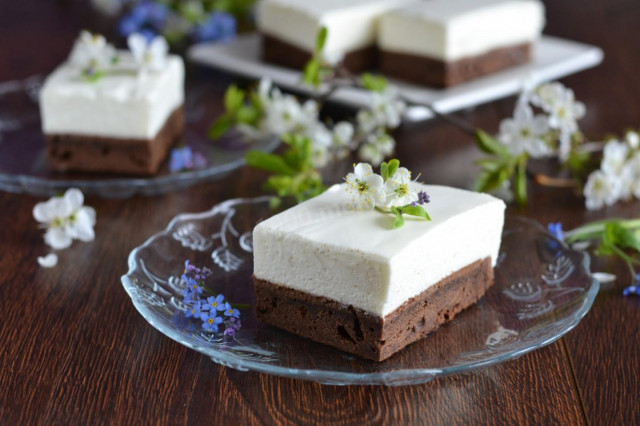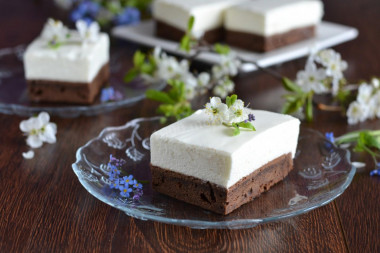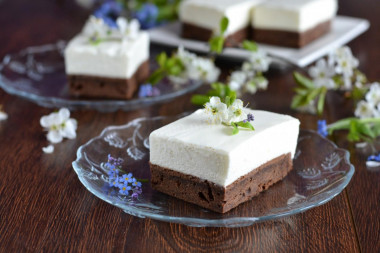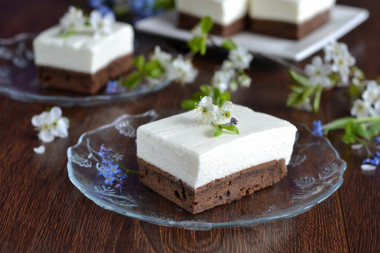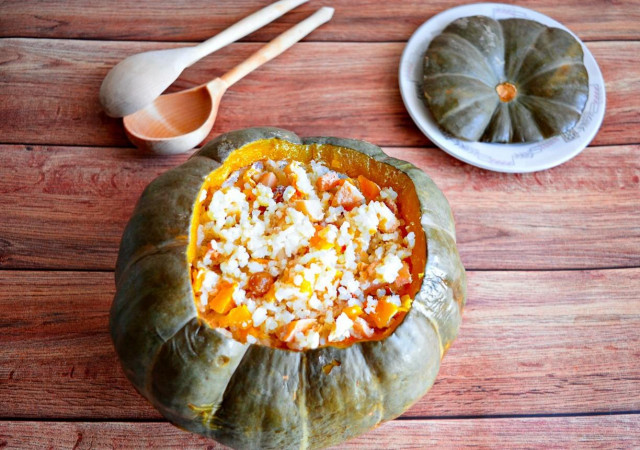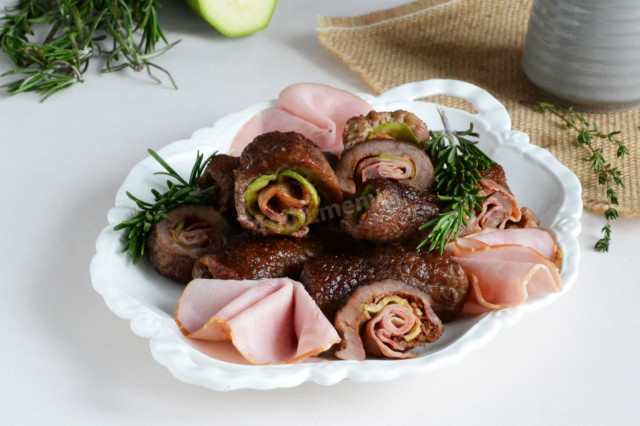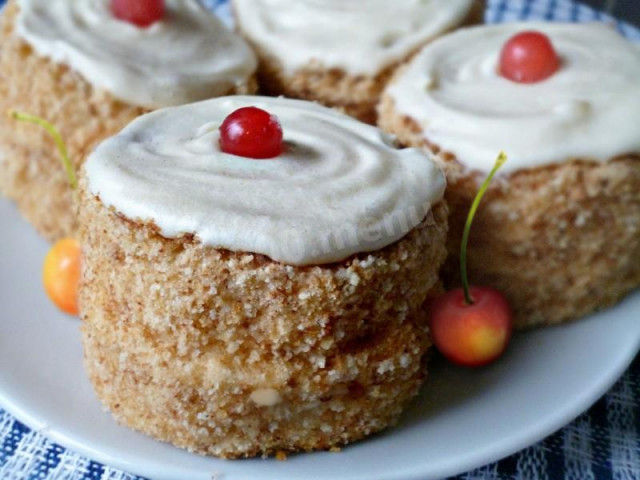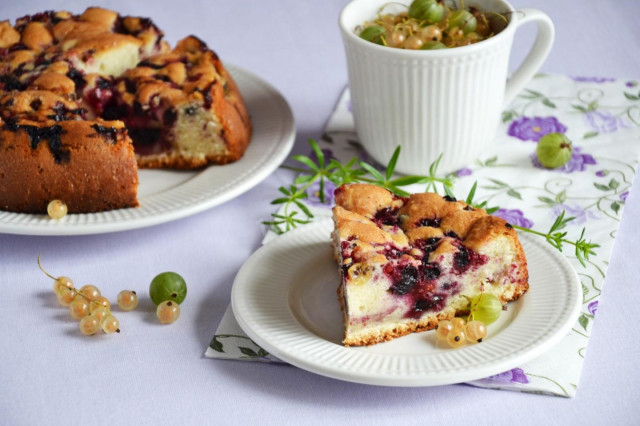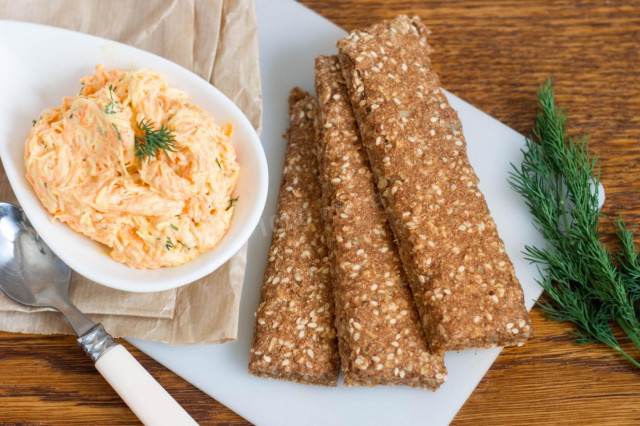Composition / ingredients
Step-by-step cooking
Step 1:
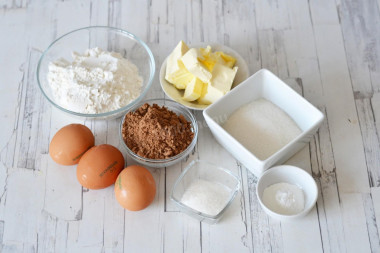
Prepare all the necessary ingredients for the dough. Butter should be soft, so take it out of the refrigerator in advance and leave it to defrost at room temperature (I take it out in the evening). To defrost the butter faster, cut it into small cubes. Eggs should also be at room temperature, so take them out of the refrigerator 30 minutes-1 hour before cooking. Take the flour of the highest grade. Use flour of the highest grade.
Step 2:
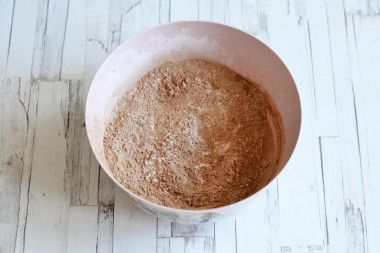
Sift flour with baking powder and cocoa. Then stir the mixture with a spoon. This will saturate the flour with oxygen.
Step 3:
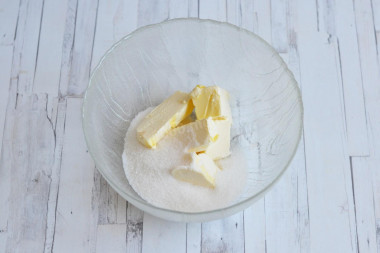
In a separate bowl, whisk the soft butter at room temperature with sugar and vanilla sugar until fluffy.
Step 4:
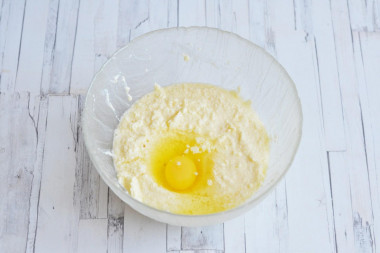
Add eggs at room temperature one at a time, beating the mass until fluffy each time.
Step 5:
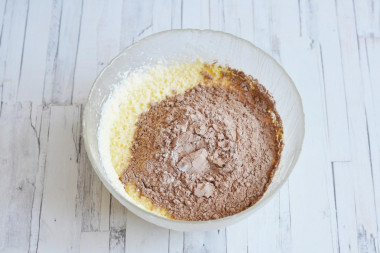
Add flour to the dough in parts, beating the dough each time with a mixer at low speed.
Step 6:
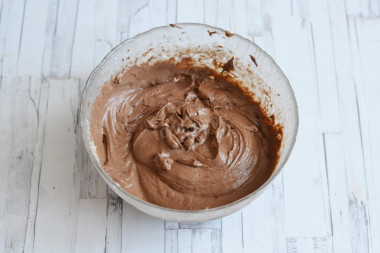
The result should be a soft, viscous, homogeneous dough. It should not drain from the spoon, but also not be too dense. The consistency is like thick sour cream. If the dough is too viscous, you can dilute it with 2-3 tablespoons of milk and beat it.
Step 7:
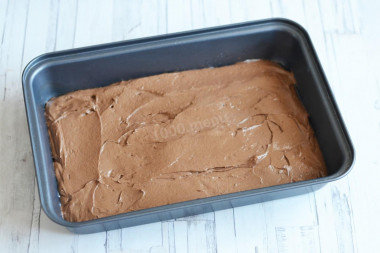
Transfer the resulting dough to a baking dish lined with parchment and greased with butter (20 × 30 cm) and smooth it out.
Step 8:
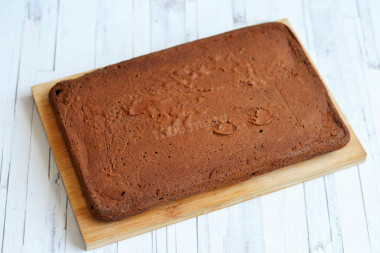
Put the form with the dough in a preheated 180 ° C oven and bake the cake for 20-25 minutes. It is very important not to over-dry the cake. Therefore, even if it seems that the dough may not be ready, it is better to leave it for 10-15 minutes in a cooling oven. Remove the finished cake from the mold and gently turn it over to the other side and cool completely.
Step 9:
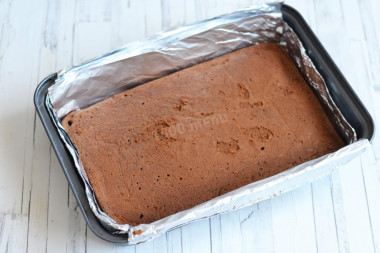
Return the cake to the form in which it was baked (also with the bottom side up). If there is a space between the mold and the cake, make side sides of foil so that the cream does not leak into these cracks between the cake and the mold. I also advise you to put a food wrap or parchment under the cake, so that later, by pulling the edges, you can safely take the cake out of the mold. The cream in it is very delicate and can crack if you try to take it out with a regular spatula.
Step 10:
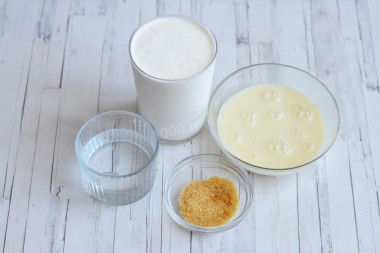
Prepare all the necessary ingredients for the souffle. Cream and condensed milk should be very well cooled. Warm cream may not be whipped or whipped badly.
Step 11:
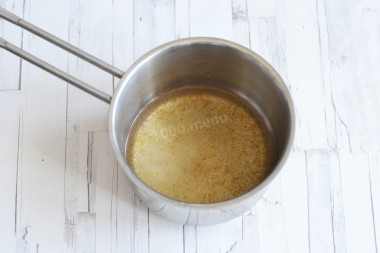
Fill gelatin with water and leave to swell for 10-15 minutes.
Step 12:
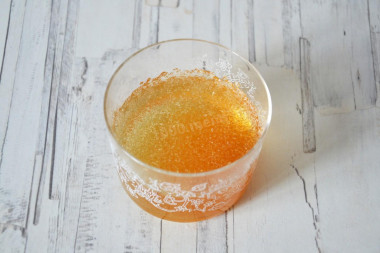
Then dissolve the gelatin over low heat until all the crystals dissolve. Bring the gelatin to a boil, but do not boil!
Step 13:
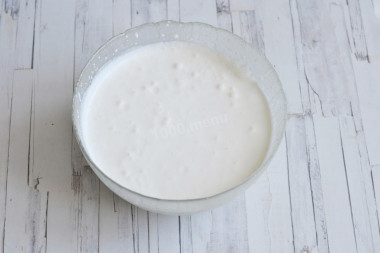
Whisk cold cream until fluffy. Add condensed milk and whisk again until smooth.
Step 14:
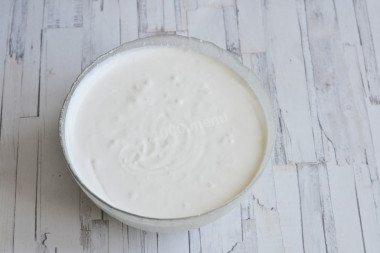
Without ceasing to beat, pour in a thin stream of hot gelatin. The mass will become slightly elastic. It is not necessary to beat for a long time, literally 2-3 minutes.
Step 15:
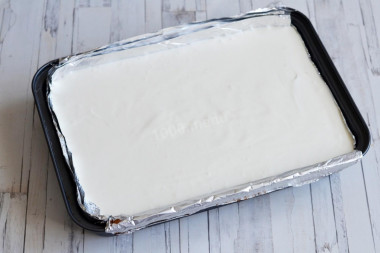
Pour the resulting souffle on the cake. Tap the form lightly on the table several times so that the cream spreads better. Put the mold in the refrigerator for 6-8 hours. To prevent cakes from absorbing excess odors from the refrigerator, it is better to tighten the mold with cling film. !!! It is necessary to stretch the film so that it does not sag and does not touch the surface of the cream. Because otherwise, when you remove the film, the cream will stick to it and the top layer of cakes will be damaged.
Step 16:
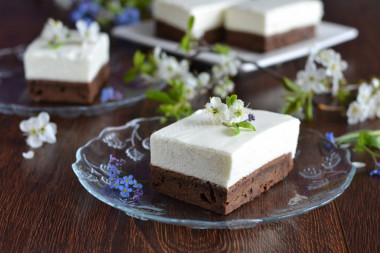
Remove the frozen mass from the mold and cut into portion cakes. Enjoy your meal!
Caloric content of the products possible in the composition of the dish
- Buttermilk - 36 kcal/100g
- Cream of 20 % fat content - 300 kcal/100g
- Cream of 10% fat content - 120 kcal/100g
- Cream - 300 kcal/100g
- Chicken egg - 157 kcal/100g
- Egg white - 45 kcal/100g
- Egg powder - 542 kcal/100g
- Egg yolk - 352 kcal/100g
- Ostrich egg - 118 kcal/100g
- Whole durum wheat flour fortified - 333 kcal/100g
- Whole durum wheat flour, universal - 364 kcal/100g
- Flour krupchatka - 348 kcal/100g
- Flour - 325 kcal/100g
- Granulated sugar - 398 kcal/100g
- Sugar - 398 kcal/100g
- Condensed milk with sugar - 324 kcal/100g
- Butter 82% - 734 kcal/100g
- Amateur unsalted butter - 709 kcal/100g
- Unsalted peasant butter - 661 kcal/100g
- Peasant salted butter - 652 kcal/100g
- Melted butter - 869 kcal/100g
- Cocoa powder - 374 kcal/100g
- Gelatin - 355 kcal/100g
- Water - 0 kcal/100g
- Baking powder - 79 kcal/100g
- Vanilla sugar - 379 kcal/100g

